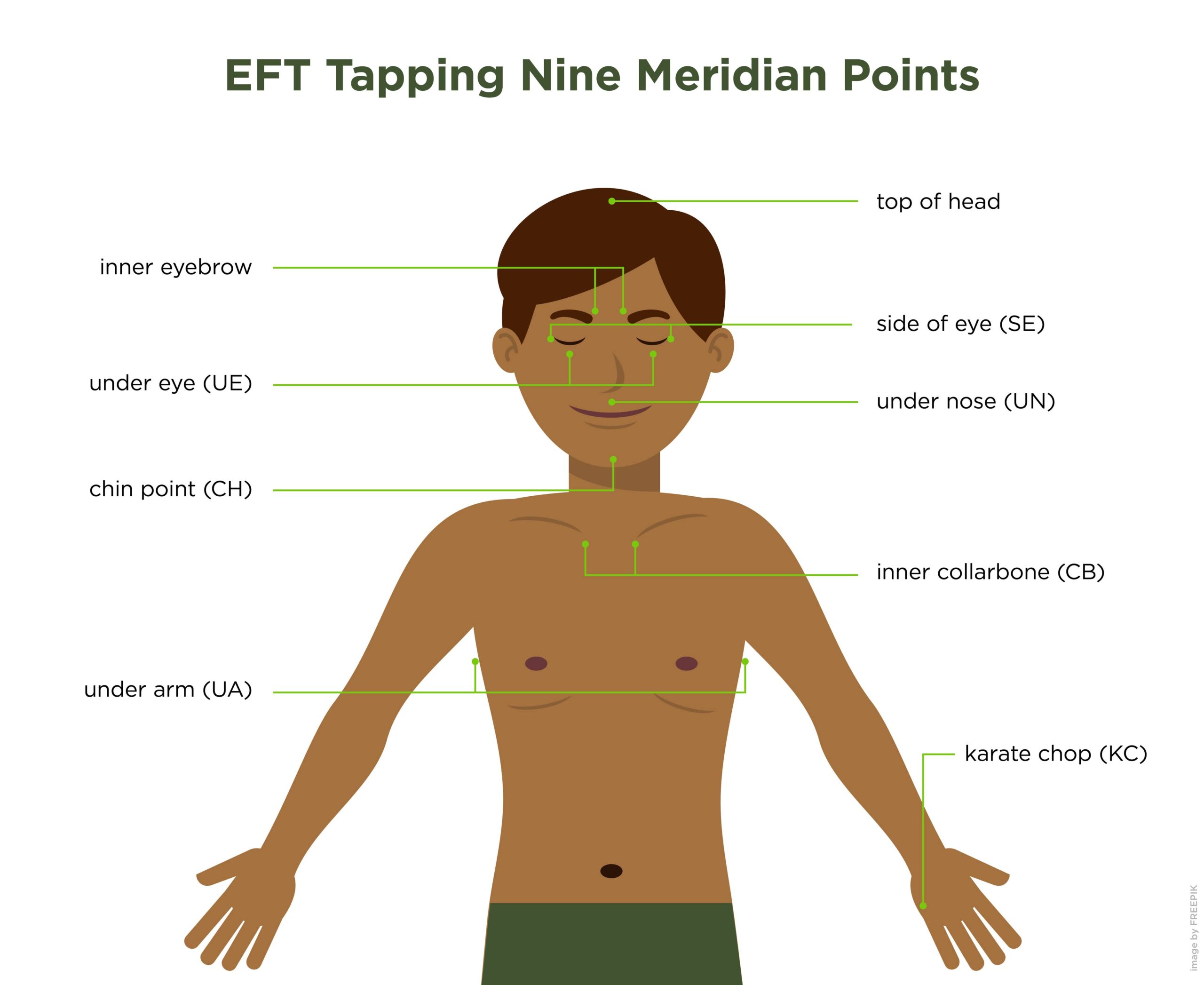
People deal with anxiety and stress in different ways. For some, journaling does the trick. Others try a moving meditation practice, or channel natural healing vibrations through earthing. Others get hooked on yoga, or sound healing. If you’re looking for a novel way to relax and deal with stress, a technique that involves tapping has been slowly yet steadily gaining popularity among the wellness circles.
EFT (emotional freedom technique) tapping is an alternative wellness therapy that combines cognitive behavior therapy (CBT) with some aspects of the TCM’s (Traditional Chinese Medicine) acupressure. People who use this technique believe that tapping relieves stress by restoring balance and harmony in the body.
Where did EFT come from?
In the 1970s, several doctors dabbled in stimulating acupressure points to help deal with stress, fear, and other traumas. One of them was Dr. Roger Callahan, the founder of Thought Field Therapy. Later, one of Callahan’s students, Gary Craig, developed EFT or emotional freedom technique.
TFT and EFT are similar in that they involve tapping on specific points in the body while focusing on an emotion or problem. TFT was one of the first “Energy Psychology” methods developed. Whereas Callahan’s TFT was more precise and rigid, Craig developed the EFT to be a one-size-fits all. EFT uses the same tapping sequence, regardless of the situation or the condition of the patient. Craig later tested EFT with clients and found it to be effective.
How does EFT tapping work?
Similar to acupuncture and acupressure, tapping involves channeling the body’s energy meridian points. We all have meridian points located all throughout our bodies, pathways where energy flows. These are also called “energetic meridians.”
Tapping restores balance and harmony by “tapping” on these meridian points using the fingertips, while also resolving physical and emotional issues.
Watch the video below to see how a typical tapping session works.
How does tapping for anxiety work?
How does tapping work? It’s simple, really.
The first step is identifying the feeling or situation that’s bothering you. Create a statement that acknowledges that feeling, followed by a phrase of acceptance. The basic script goes something like, “Even though I am overwhelmed at work, I deeply and completely accept myself anyway.“ This will change according to what you’re going through, and what your needs are.
Then you focus on that statement as you tap each of the nine meridian points in your body. Here’s the list of the nine points you tap during an EFT session.
- The side of your hand
- The inside of your eyebrow, where the hair of the eyebrow starts
- The side of your head
- The inside of your eyebrow, where the hair of the eyebrow starts
- The side of your eye
- The area just under your eye
- The area under your nose
- The area between your bottom lip and chin
- Roughly two inches above your collarbone
- The side of your body, at the top of your ribcage
- The top of your head
See the illustration below for these nine focal areas. Tapping involves a sequence of five steps, also called a round, which takes around two to three minutes to complete. Depending on your need, you can start with a lower intensity tapping (around four to five rounds). For more intense issues, it may take 10 to 12 rounds.
Tapping requires not only an understanding of the technique, but also focus. For it to work, you need to keep your focus on that worry, anxiety, stressful situation causing unwanted physical sensations you’re feeling at the moment. You can do tapping on your own, have a one-on-one with a tapping therapist, or join a small class.
Should you tap only when you feel anxious? Not really. According to Kristen Curtis, certified EFT practitioner interviewed by Very Well Mind, you may also use tapping as a daily maintenance practice. “That way, your nervous system is better equipped to enter an anxious situation already, a sense of more calm and ease because you have trained it to do so.”

Should you try EFT tapping?
There are numerous scientific studies showing how effective tapping is, especially for people experiencing anxiety, PTSD, phobias, and depression.
Thought leaders like Gabby Bernstein, Denise Duffield Thomas, and Nick Ortner have attested to tapping helping them deal with issues ranging from food cravings to money worries to unnecessarily judging others.
However, despite this, tapping is not widely accepted as an holistic or complementary therapy yet – at least, not like acupuncture.
But should this fact stop you from trying it?
Take it from these people whose lives have been improved by tapping, and you be the judge.
Susie Moore of greatist.com has this to say about tapping: “This is basically a form of energy hygiene, in my opinion. And like skipping out on the few minutes it takes to maintain personal hygiene ain’t cute, skipping out on stress maintenance in our bodies isn’t a great idea, either. The busiest person can squeeze it in — I tap around five to seven minutes per day, and it totally works.”
For Sarah Watts, tapping helped her deal with sugar cravings: “Normally, feeling this anxiety would make me run immediately out the door and buy a Butterfinger bar. But the tapping grounded me. You can sit here and feel this, I told myself. Just stay in your discomfort for a moment — you’ll survive. That night, when I had my usual sugar cravings, I tapped again: I really want sugar. I really want sugar. I really want sugar. As I tapped, I hummed with anxiety, but for some reason, saying them out loud made me feel much more at ease.
Tags



0 Comments
Trackbacks/Pingbacks